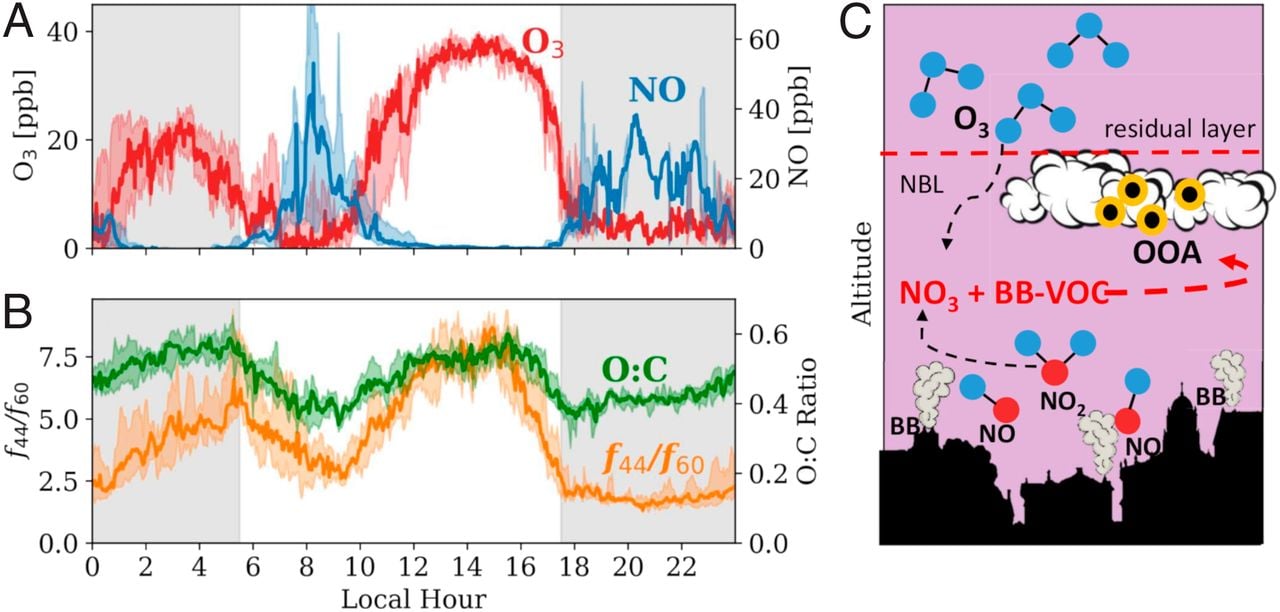
Despite the anti-covid limitations to mobility, overruns in particulate concentrations in the Po Valley continue to be observed. A study, conducted by the Center for Studies in Air Quality and Climate Change at the Foundation for Research and Technology Hellas of Patras in Greece with participation by CNR-ISAC and published in PNAS, shows how the chemical reactions underlying the formation of secondary particulate matter are not generated only by emissions from traffic and agriculture.
According to the data of the Regional Environmental Protection Agencies (ARPA), the levels of fine particles dangerous for human health (PM2.5 and PM10) in the Po Valley remain high despite the anti-COVID limitations on the movement of people and vehicles. A study published in PNAS (which involves the CNR-ISAC, and lead by the Center for Studies in Air Quality and Climate Change at the Institute of Chemical Engineering of the Foundation for Research and Technology Hellas of Patras in Greece) shows and quantifies the effect of biomass combustion emissions on the chemical transformations responsible for the formation of secondary particulate matter.
“A large part of the PM in the Po Valley is of secondary origin, formed from precursors that react in the atmosphere”, says Marco Paglione researcher at CNR-ISAC and co-author of the study. "The mechanisms by which these pollutants are transformed into particulate matter are still under study, also because in the cold months the solar radiation - which is usually considered the engine of the chemical reactions that regulate the concentrations of secondary pollutants in the atmosphere - is reduced to a minimum".
However, the study opens up new perspectives showing how “secondary particulate matter is formed rapidly also through chemical transformations of pollutants occurring in the absence of radiation (dark aging) and promoted by the presence of liquid particles in the atmosphere, such as fog. Up to now it was possible to estimate the effect of these reactions on the formation of secondary PM starting from sources from traffic and agriculture (particulate from ammonium nitrate). Our study shows that emissions from wood combustion for domestic heating, such as those from wood-burning stoves and pellets, suffer the same fate, contributing to the total concentrations of PM more substantially than previously supposed”, concludes Paglione. “These results clarify the contributions of specific winter PM sources in the Po Valley as well as in other regions of the world, while identifying mechanisms that are completely lacking in air quality models”.
The project was supported by the ERC Consolidator Grant Pyrogenic Transformations Affecting Climate and Healthy“ PyroTRACH” (PI: Athanasios Nenes; https://twitter.com/pyrotrach )
Kodros J.K., Papanastasiou D.K, Paglione M., Masiol M., Squizzato S., Florou K., Skyllakou K., Kaltsonoudis C., Nenes A., Pandis S.N.: Rapid dark aging of biomass burning as an overlooked source of oxidized organic aerosol – Proceedings of the National Academy of Sciences (PNAS) Dec 2020, 117 (52) 33028-33033; https://doi.org/10.1073/pnas.2010365117
Comunicato Stampa CNR 14/2021 https://www.cnr.it/it/comunicato-stampa/9978/superamenti-pm10-il-contributo-del-riscaldamento-domestico
